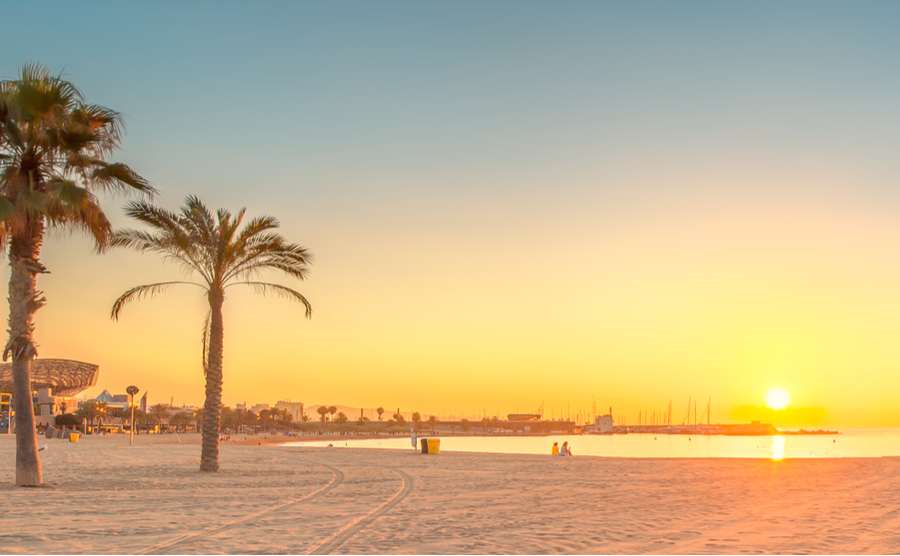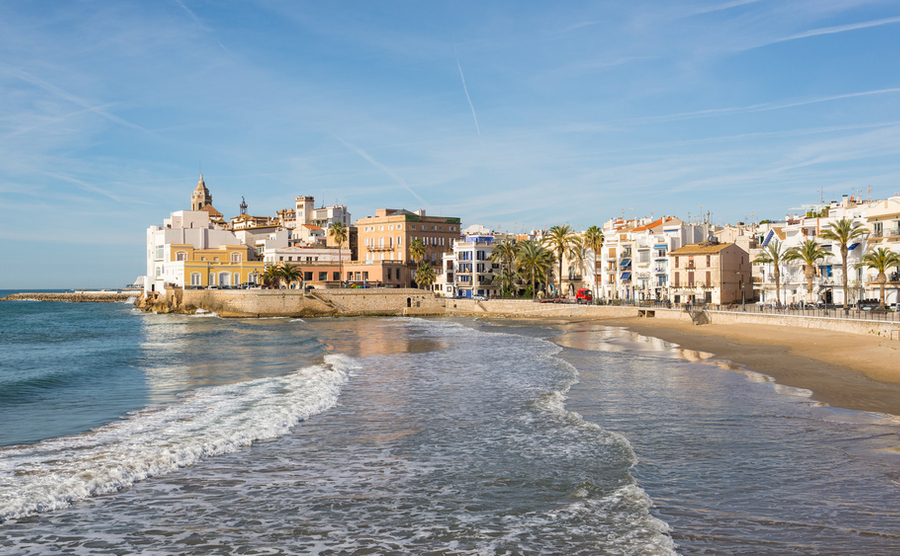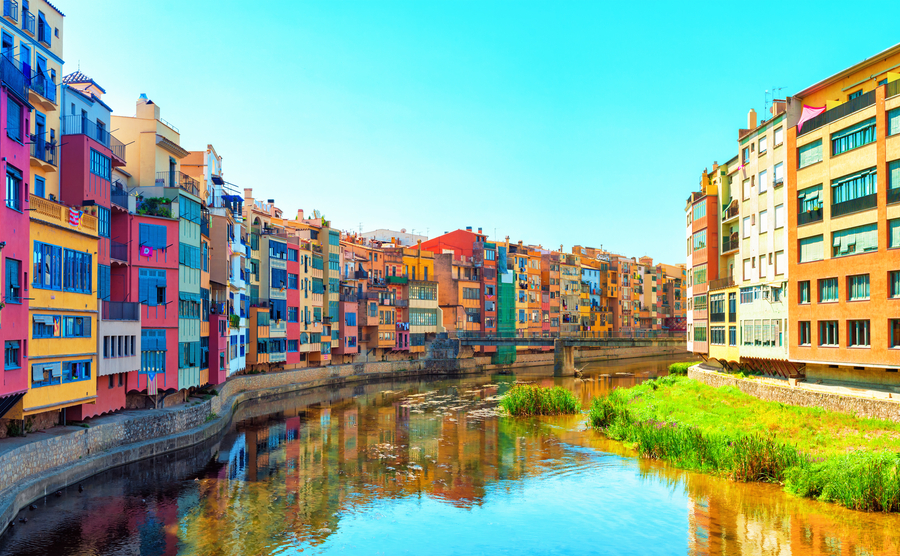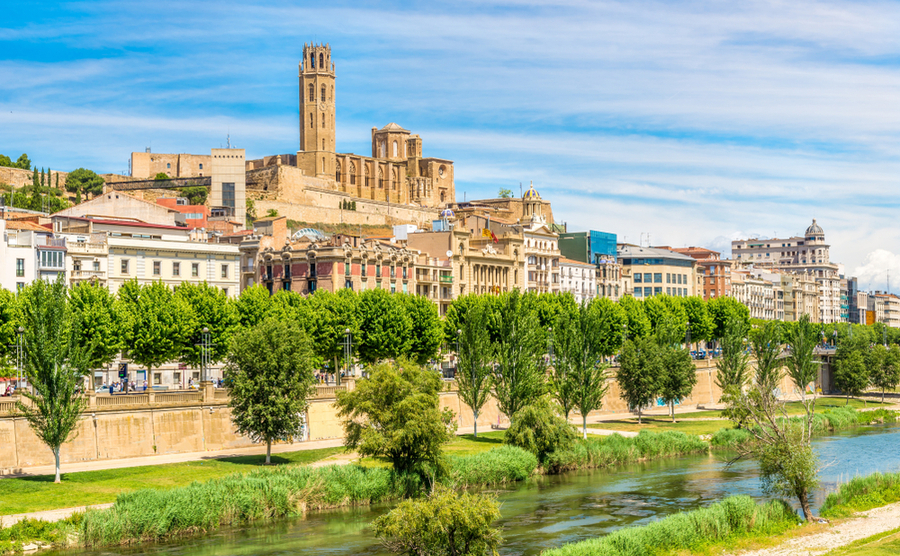While many British buyers fly over Catalonia on their way to the southern Costas, local expat Sally Veall explains what they’re missing out on when they ignore our closest Spanish province and its vibrant city, Barcelona.
Unlike the southern Costas, Catalonia offers overseas buyers the chance to enjoy the seasons and a slightly cooler climate, all while remaining close to the beach.
Many of those at working age will go to Barcelona, the capital of Catalonia, where city life is happily combined with beach life. On the other hand, those who are retired, or who are looking for something a little more laidback, tend to bypass the city and head for the nearby coastal towns.
If you’re preparing to come over to Spain to look at properties, make sure you know what to look for by reading our free guide, Your Viewing Trip.
Approximately 1.5% of the population in Catalonia is made up by foreign nationals. It is a very large region with 4 provinces: Leida, Girona, Barcelona and Tarragona. It is also very varied, both in landscape and in ambiance, running from the Pyrenees in the north down to the Ebro Delta in the south.
The south of Catalonia lies just above the very popular Valencia Community, and the two regions even share a language. Note there are regional differences – Catalan/Valencian.
So, what would it be like to live on the coast of Catalonia and where are the best places to buy property? Let’s take a look…
Barcelona
The vibrant city of Barcelona is just a two hour drive from the Pyrenees mountains, making it ideal for those also looking to ski. The city has its own beaches, an excellent public transport system, great schools, lovely parks and a variety of districts to buy property in, ranging from affordable to very upmarket.
Barcelona is diverse and multicultural with numerous groups of expats of all nationalities. As in all of Catalonia, both Castilian and Catalan are the official languages.
The city is extremely accessible thanks to the large international airport, El Prat International airport, which serves Europe as well as further afield, with regular flights to the USA and the Far East.

Sunrise over Barcelona Beach
Barcelona is a cultural hub with impressive architecture dating back as far as 2,000 years. One example of the beautiful architecture is the Liceu Opera House which not only offers opera but ballet and musicals too. The city also has a very lively music scene, from jazz and pop to classical and country and western.
Property prices have fallen by up to 10% in some areas during the pandemic but are still higher than in other parts of Catalonia. Barcelona is also a little more expensive than other Spanish cities, like Madrid.
Barcelona Province
As we move out of the city centre we reach some really lovely towns that are still within easy reach of Barcelona. One such town is Sitges, often called the Saint Tropez of Spain, which just 45 minutes’ drive from Barcelona and offers a great lifestyle. It is based around the Bay of Sitges and enjoys a spectacular mountain backdrop.
With 17 beaches you really are spoilt for choice. Likewise, if you enjoy shopping, you’ll find endless charming boutiques to explore. Sitges is located in the warmer region of Catalonia and often enjoys temperatures as warm as 22º in March! Property prices do vary but it is quite a smart town so prices reflect this.

The beautiful town of Sitges on a sunny spring day
Another great option is Vilanova I La Geltrú, which expertly blends old and new. You’ll find everything you would expect here including shops, bars, restaurants, watersports and nightlife. The old town, however, is altogether a different world with medieval walls and outstanding architecture. The town has a famous Rambla in which to stroll.
For those who have boats, the marina is one of the loveliest on the coast whilst beach lovers will find 5 excellent beaches for relaxing. There is also a British school here and property prices are low compared to nearby towns. It offers a quieter way of life than Sitges but is still very close to Barcelona.
Tarragona
South of the province of Barcelona lies Tarragona, the capital of the province with the same name. Here you will be close to the Valencian Community, receive warm weather most of the year and enjoy a relaxed way of life.
Tarragona itself is a historic city with many well-preserved Roman ruins, such as the Amphitheatre. Reus airport is less than 15 minutes away and Barcelona airport about an hour’s drive.
Many people opt to live outside the city. The Costa Dorada is comparatively under populated and has some of the best investment opportunities in Spain. Property prices are lower than further north and the beaches are less crowded – this is even true with the popular town of Cambrils with its long sandy beaches.
As with many Spanish coastal towns, Cambrils was once a fishing village and the old town and winding streets still has a remarkable charm. There is a good selection of amenities and you can find many of your UK home comforts here too, such as a pub and British supermarket. Cambrils is quiet off/season which can be a welcome break for those who live there.
Prices are just half the story. To accurately budget for your move abroad, read The Currency Guide to Emigration, free to download.
Girona city
Girona city often gets overlooked by those flying into Girona as they rush off to nearby Barcelona or the beaches further south. However, Girona is a small but glorious example of a living medieval town with an imposing cathedral, colourful houses that line the banks of the River Onyar and beautiful gardens which blanket the hillside.

Colourful houses along the River Onyar
The airport is seasonal and is served by Ryanair. Between October and April, you would need to go to Barcelona El Prat airport where you’ll have a wider choice of airlines.
There are some excellent restaurants in Girona. One of particular note is El Celler de Can Roca, one of the top 3 restaurants in the world! For smaller budgets, there is no lack of choice and there are some fantastic tapas bars to discover. You’ll also find great jazz clubs and other music venues.
Most people opt to live across the river in the new town or on the hills, but each district has its own shops, bars and lifestyle. There is an English school and a small British community in and around the city. Property prices are higher than in the south of Catalonia but lower than in Barcelona, which is accessible by fast train (the AVE in just 35 minutes).
Torroella de Montgrí
Lying a few kilometres from the sea, Torroella De Montgrí is a very well preserved medieval town with stone buildings, pretty squares and a variety of restaurants and shops. There is a good market there on Mondays and though it is quiet in the winter, there are still things going on.
One of the most popular places to live is between Torroella De Montgrí and nearby town L’Estartit. There are some really pleasant urbanisations between the two towns, spanning the hillsides, with all types of property, mostly with large gardens and pools. Prices here are lower than other parts of the Costa Brava, though the whole area is more expensive than the south of Catalonia. There are a number of British residents living in the urbanisations and the social life is very good.
Spain Property Guides can put you in touch with the very best lawyers, estate agents and international payments specialists in Spain, for total peace of mind. Get in touch with your Golden Three here.
Platja D’Aro
Now let’s look at somewhere completely different. A complete contrast, Platja D’Aro was one of the first purpose built holiday resorts on the Costa Brava. What it somewhat lacks in beauty is more than made up for by the convenient lifestyle of living there.
It is “open” all year round, has a modern shopping centre with well known labels as well as no end of restaurants and bars. Best of all, the resort boasts long, sandy beaches and a fabulous promenade.
The town is mainly flat, ideal for those who struggle with hills, but there are some nice residential areas in the lower slopes behind the town. There is a wonderful path to follow that takes you to S’Agaro, where there is a very pretty bay, a 5 star hotel and some delightful places to have lunch or dinner.
Close to the beaches are all kinds of apartments – those with sea views obviously being more expensive. Platja d’Aro marina is usually pretty busy with yachts of all types and there are some waterfront homes on offer too.
There is also a commercial complex with a cinema where they show films in English and a leisure centre with a bowling alley. The amenities in the town offer something for everyone, whatever their age. The climate is mild but you do get all the seasons, as with the rest of the Catalonian coast.
Province of Lleida
Finally, we look at Lleida, in the north-east of Catalonia. The province includes the Pyrenees and the Garroxa region of dormant volcanoes. The landscapes are spectacular here and you will find the only National Park in Catalonia, Aigüestortes i Estany de Sant Maurici National Park which boasts 200 lakes and mountains with peaks reaching 3000 metres.

View at the Old Cathedral Seu Vella with Segre river in Lleida, Spain
This region is obviously much colder than the other places we’ve mentioned, but for people who love mountains and nature, this is a place to consider.
Puigcerdá is the capital town of the comarca of Cerdanya and lies by a lovely lake. It is a very popular town throughout the year, especially for those who live in Barcelona or Girona cities who want to spend time in nature. It is a pretty town with a nice square, a jazz club and golf course nearby.
In winter, skiing is, of course, the main pastime but there are other activities such as hiking, kayaking, exploring and spas. Property prices are not as inexpensive as you might expect but there is something for all budgets.


 Property Guides
Property Guides France
France Portugal
Portugal Spain
Spain Italy
Italy USA
USA Ireland
Ireland Greece
Greece Cyprus
Cyprus Australia
Australia New Zealand
New Zealand Canada
Canada Turkey
Turkey UK
UK








